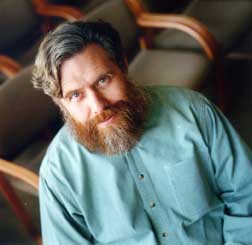
Looking at a cell is like looking into the future of our own designs.
That’s my favorite sentence from The Design Matrix by Mike Gene (a book from which I took copious notes, and am still digesting). But the reason there’s a picture of biologist George Church in this blog entry, not to mention a quote from Church as the title, is the release by editor John Brockman of the transcript of a fascinating roundtable about the nature of life.
Held this past August at Brockman’s farm in Connecticut, the roundtable ranges over a wide array of topics, including intelligent design, synthetic biology, the possibility of life elsewhere in the universe, and the effect of the genomics revolution on the theory of universal common descent — i.e., Darwin’s Tree of Life, with its single root in LUCA, the last universal common ancestor. On that score, Craig Venter says the following:
One question is, can we extrapolate back from this data set [the ongoing discovery of previously unknown gene sequences] to describe the most recent common ancestor. I don’t necessarily buy that there is a single ancestor. It’s counterintuitive to me. I think we may have thousands of recent common ancestors and they are not necessarily so common.
But check out George Church’s comments if you really want your head to pop. I think Mike Gene must have been channeling Church when he (MG) wrote The Design Matrix.
Or maybe it was the other way around. Wild days, folks. Wild days.
(HT to Abbie Smith over at ERV for the link to the Edge transcript.)